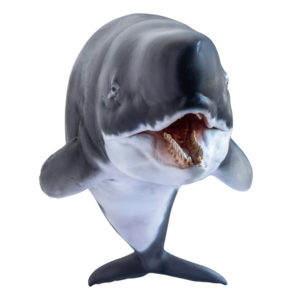Stunning Miocene Baleen Whale Fossil Rescued from Hillside
Californian Search and Rescue Team have a “Whale” of a Time
A search and rescue team at Los Angeles Sheriffs department are reflecting on a job well done as yesterday (Friday), they were called in to conduct a very unusual rescue. Normally, the volunteers are involved in helping the authorities to save lives, but on this occasion the subject of the rescue had passed on sometime before the crew arrived – around sixteen million years earlier or thereabouts. The volunteers had been called in to help extract a huge boulder that contains part of the fossilised jaw of a long extinct Baleen whale.
Miocene Baleen Whale Fossil
The fossil was located in a ravine close to Chadwick School in the Rancho Palos Verdes area of Los Angeles. Although this suburb overlooks Long Beach to the east and is somewhere around three miles from the Pacific Ocean, back in the Miocene, the area was covered by a shallow sea. This area teemed with life and several different types of whale fossil have been found, including the fossilised skull of a toothed whale that was removed from Chadwick School in January. This new fossil discovery, just a hefty stones throw from the school, represents the partial jaw of a filter feeding Baleen whale (Order Mysticeti). It might represent a new species.
Researchers at the Natural History Museum of Los Angeles County heard about the whale fossil earlier this year when, in all the surrounding publicity of the Chadwick School discovery, local resident Gary Johnson informed the museum about the fossil he had found when as a teenager he explored a ravine behind the family home.
Fossils Have Helped Palaeontologists Learn More about Prehistoric Whales
The picture (above) shows the PNSO Requena the Livyatan prehistoric whale model, to view the range of prehistoric whale replicas and other monsters of the sea in stock at Everything Dinosaur: Sea Monster Models and Figures.
Howell Thomas, from the palaeontology department at the Museum explained that the boulder was a shale deposit and that had been laid down at the bottom of the shallow Miocene sea. Over millions of years, the land had been uplifted to form the hillside and a number of large fossils of ancient cetaceans had been discovered in this part of southern California. Howell, was keen to point out how rare Baleen whale fossils are, according to the Museum, this new discovery represents one of only twenty known Miocene Baleen specimens in the world.
Back in March, Everything Dinosaur reported on the excavation of a large number of Miocene whale fossils but this time from the Atacama desert of Chile. It seems that these fossils represented a form of mass stranding of cetaceans and scientists were interested in trying to understand the cause of the stranding as well as in the extraction and preservation of the fossil material.
To read this article: Algal Bloom the Probable Cause of Miocene Mass Strandings.
The rock containing the fossil, a partial jawbone, a section of the baleen plate and elements of the skull weighed an estimated five hundred kilogrammes and the rescue team used a special three-legged frame and lifting winch called an Arizona Vortex Multipod to lift the specimen so that it could be lowered onto a special crate in readiness for hauling over an improvised track way. The tracks led to a waiting truck that could then take the fossil to the Museum, where the specimen will hopefully be put on display.
Commenting on the significance of the discovery, Thomas stated:
“It is a very rare fossil and something that we actually go out looking for. We find lots of whale fossils in Palos Verdes, so any backyard could house a fossil. However, the fossil in this particular case is very, very rare. It is very significant.”
The search and rescue team chief, Mike Leum, commented that his volunteers were more used to rescuing hikers stuck on the hillside, although the techniques the team employed to remove the specimen were typical of what they do, this mission was a little out of the ordinary.
Mike explained:
“For us, we are usually moving people, so this is our oldest victim in history. The good news is, she is not complaining at all and we don’t have to get her to the emergency room.”
Mr Leum, then stated that the exercise had been useful training for the team and officials from the Natural History Museum of Los Angeles County outlined the plans that they had for the specimen. Once the fossil had been catalogued and placed in the Museum’s research collection, researchers will set about the painstaking process of cleaning and preparing the fossil. Vertebrate palaeontologists will then be able to compare this material with other Miocene whalebone specimens to see if these fossils do indeed represent a new species of Baleen whale.


